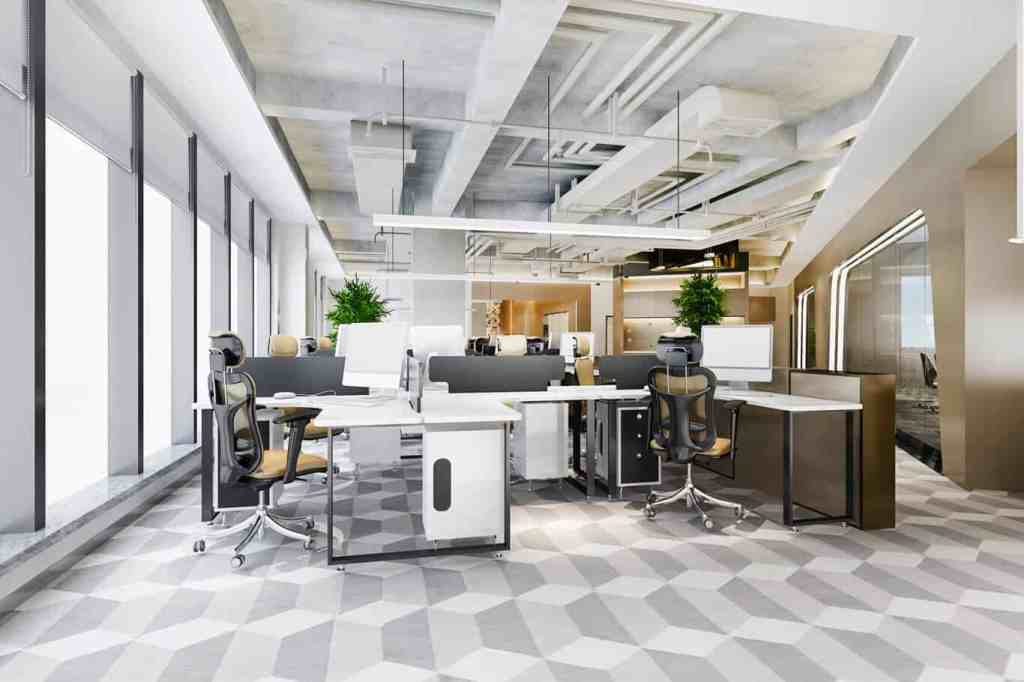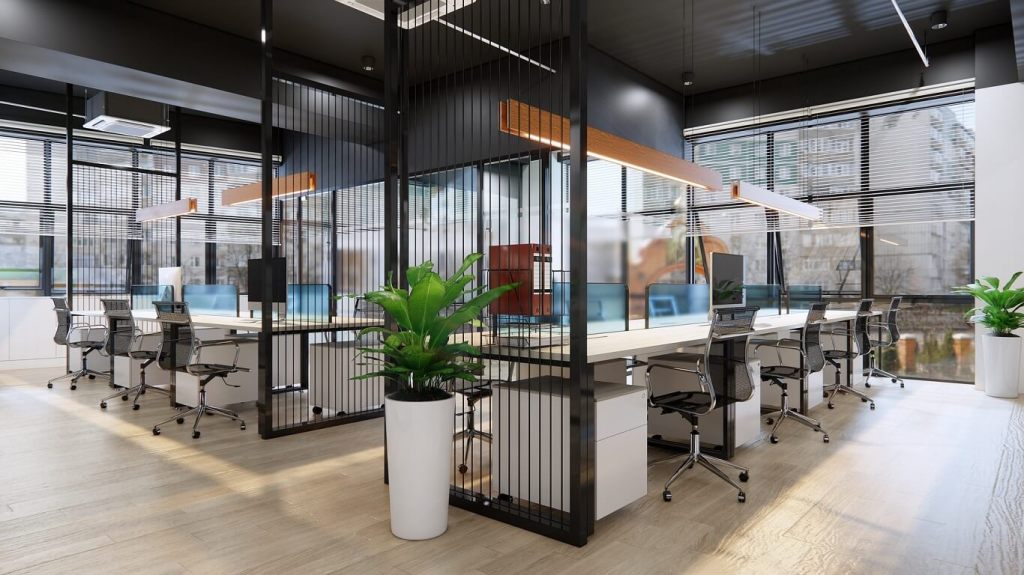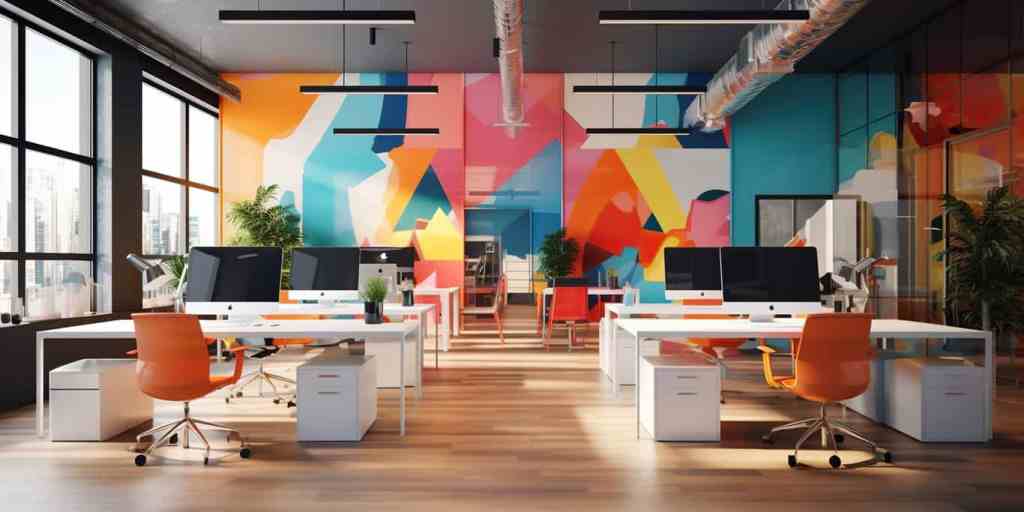The walls of your workplace determine the atmosphere of the whole room. Your office walls may create a positive first impression on clients, promote teamwork, and increase productivity with the appropriate interior design decisions. On the other hand, selecting the incorrect design may have the opposite impact. When creating the office wall interior design through Officebanao keep the following points in mind.

Define Your Brand Image
One of the things that clients and guests notice the most when they walk into your business are the walls. Therefore, it’s critical that the entire brand image as well as values of your business be reflected in and reinforced by the design of your office walls. Your brand is a representation of your company’s values and desired public image. The hues, materials, artwork, and design components you employ on the walls of your workplace should complement the tone and messaging of your brand. Neutral hues, such as light greys and whites, for instance, are thought to exude professionalism and are thus appropriate for more established firms. Bolder colour splashes, on the other hand, could highlight inventiveness and imagination if such qualities are valued highly in your workplace.
You can directly incorporate your brand identity into the office wall design. For instance, prominently featuring your company logo in a consistent spot helps identify your business to visitors. Including your mission statement or core values on a wall art display or graphic reinforces what drives your company purpose. By defining your brand image upfront, it provides important guidance for choosing wall colours, textures, graphics and other decor that will visually represent that brand to external audiences. The office wall interior design then becomes an extension of your overall branding strategy to positively shape first impressions.
Consider Function over Form
When designing the interior walls of your office space through Officebanao, it’s crucial to prioritize how the walls will be used above aesthetic considerations. Think practically about the day-to-day functions that will take place on your office walls. Will they be used for team brainstorming sessions where people will be writing on walls? Or for displaying presentations and visual content? Consider activities like pinning up schedules, whiteboarding ideas, or showing clients presentations. Choose wall materials and surfaces that directly support these functional needs.
Opt for materials with practical functionality like glassboards, whiteboards or magnetic panels that can be easily written on and erased as ideas evolve. Make sure any surfaces you select are smooth and easy to mark on with dry erase markers or post-it notes. Also think about lighting conditions near walls. Those beside windows may see more sunlight throughout the day. Darker coloured walls in well-lit areas won’t show smudges and dirt as easily as lighter colours.

Incorporate Artwork and Greenery
Blank walls can make a space feel sterile so include decorative elements that add visual interest. Curated artwork reflecting your company’s interests and local culture brings personality. Plants and greenery have been shown to reduce stress and increase productivity too. Consider living walls or wall shelves housing potted plants. Artwork and greenery together soften hard surfaces and make the space feel welcoming to clients and employees alike.
Use Colour Psychology
Certain wall colours have been shown to impact moods and behaviours in offices. Cooler colours like blues are calming and encourage focus while warm colours like yellows promote creativity and collaboration. Neutral tones like greys allow for flexible configuration. Test different hues in small areas first before committing to a large wall space. Colour psychology is also cultural – what has meaning in one region may not translate elsewhere. Consider your employee demographics for the right psychological effects.
Incorporate Natural Light
Natural light is extremely important for office well-being and productivity. Daylight shining through windows has been scientifically proven to lift moods and reduce stress and fatigue in workers compared to artificial lighting alone. It also improves concentration and overall job performance. This is because natural light more closely mimics the circadian rhythms that our bodies evolved with from sunlight exposure. It’s important for office interior wall design to take full advantage of any available natural lighting. Light coloured walls near windows will reflect daylight further into the room rather than absorbing it in dark colours which can cause shadows. Opt for lighter greys, whites or off-whites close to windows to bounce daylight around the space. You may also have very large expanses of window wall that need breaking up visually.

Allow for Reconfiguration
Office needs change over time so design walls that can adapt. Use modular or mobile wall systems that permit rearranging of furniture, technology and people without construction. Consider open plan designs using partial height walls or room dividers that provide privacy on demand. Demountable wall surfaces allow reconfiguring layouts to suit new team structures or work processes. Flexible design keeps pace with evolving business requirements.
Budget Conscious Choices
While design impacts the workspace experience, costs matter too. Consider more affordable material options that still achieve your vision. Painted drywall, decorative wall panels or modular shelving systems offer function at lower price points than permanent built-ins. Reusable adhesive surfaces like magnetic or chalkboard paint allow changing designs inexpensively. For inspiration, look at open plan office makeovers on a budget. With some creativity, great design need not break the bank.
Sustainability in Mind
Incorporate eco-friendly materials that have less impact on the environment like recycled content, low-VOC paints and renewable or locally sourced wood. Look for wall products using minimal packaging and manufactured via clean production. Consider longevity too – designs made to last with durable, reusable components minimize waste long—term. Green design aligns office interior with corporate sustainability goals and values.
Maintenance is Key
High traffic office areas see a lot of wear and tear over time. Choose durable, easy to clean materials that hold up well to daily use. Glass, stone and solid surface materials clean up easily while painted surfaces may require more frequent touch-ups. Ensure any integrated technology like screens or speakers have simple maintenance access. Plan for wall refresh cycles to replace worn furnishings or update designs periodically keeping the space looking professional.
Comfort and Wellness
How a space feels impacts occupant health, comfort and performance. Consider ergonomic needs like adjustable mounting or seating heights. Acoustic properties prevent distracting echoes while thermal comfort ensures temperature control. Use biophillic elements connecting indoors to nature. Proper lighting supports visual tasks while air quality circulates fresh air. A balanced, thoughtful design supports whole-body wellness at work.
Conclusion
Budget, brand image, functionality, lighting, colour, artwork, flexibility, sustainability, maintenance and wellness are all important factors to weigh when choosing interior office wall design through Officebanao. With careful planning upfront, your interior walls can set the stage for a highly productive, collaborative and healthy work environment for years to come.





Leave a comment